Appearance & Measurement Experts since 1986
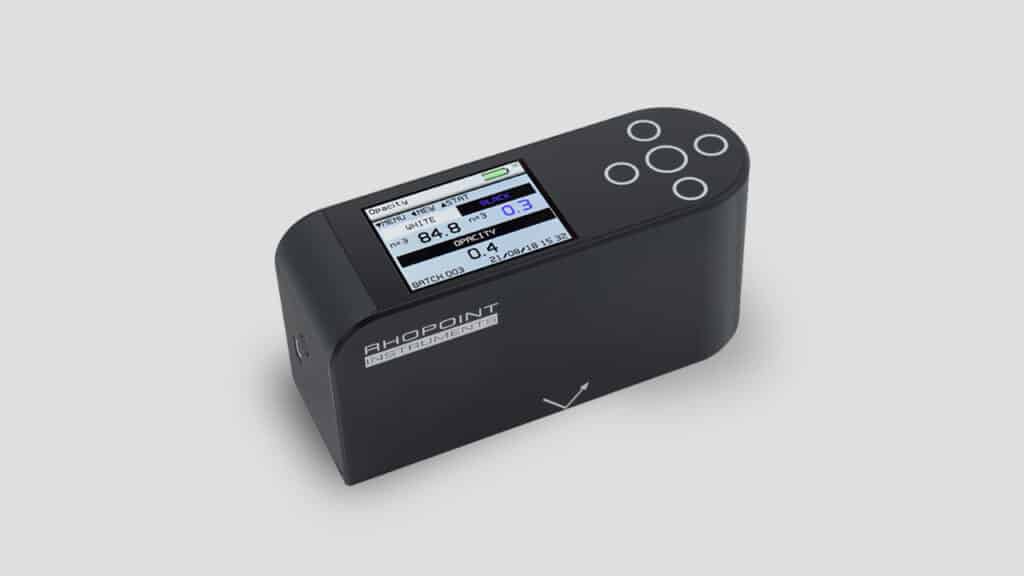

The opacity of a film is its ability to hide the surface or contents over which it is placed. It is also sometimes referred to as contrast ratio and hiding power and is directly influenced by the film thickness and quantity / degree of dispersion of pigments within the material. Opacity is expressed as the ratio of reflectance of the material on a black background to the reflectance on a white background.
DIN 6125 specifies the use of a spectrophotometer for measuring hiding power/opacity of white pigmented films. In the latest draft, a 45/0 reflectometer can be used as an alternative to a spectrophotometer as the measurement results closely correlate.
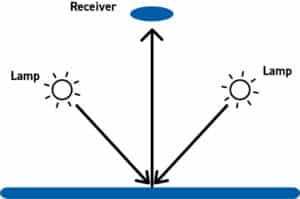
The most common angular configuration used in a spectrophotometer is 0°/45° (or 45°/0°). Using this configuration, the surface is illuminated by a single or multiple light sources at 45° and the reflected light measured at 0°. As gloss is excluded using this method it more closely correlates to visual evaluation on smooth or matt surfaces.
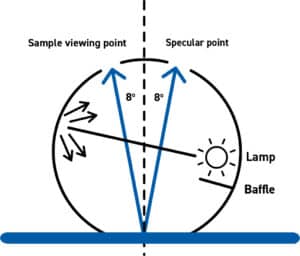
Whilst 45/0 is a popular angular configuration colour measurements are only in one direction across the surface. By using a D8° (Diffuse 8°) sphere-based system light reflected at all angles from the surface can be collected to calculate colour data that closely matches what a human eye would see. Gloss can also be included or excluded.
Spectrophotometers using this configuration are commonly used for measuring colour of textured surfaces such as textiles and plastics as well as shiny or mirror-like surfaces, including metallic inks, printing over foil, and other highly glossy surfaces. However Spectrophotometers are generally higher in cost than 45/0 systems and are normally laboratory based rather than being a portable hand held units.

An opacity test chart similar to the one shown below is used to perform the test. A representative sample of film is placed on top of the chart of sufficient size to cover both the black and white areas. Care must be taken to ensure that no damage, e.g kinks, wrinkles, scratches are present on the sample before and during sampling. The sample surface must also not be touched with fingers.
Measurements are then made using either configurations as detailed above on the black and white areas and the opacity calculated.
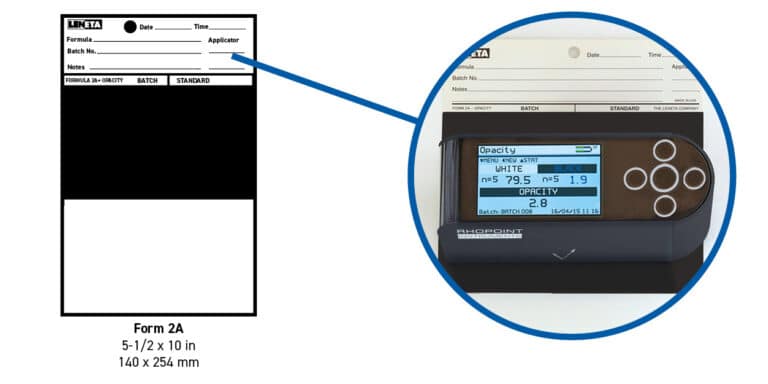
Opacity (%) = Yblack x 100
Ywhite
DIN 6125 specifies the use of a spectrophotometer for measuring hiding power/opacity of white pigmented films. In the latest draft a 45/0 reflectometer can be used as an alternative to a spectrophotometer as the measurement results closely correlate.
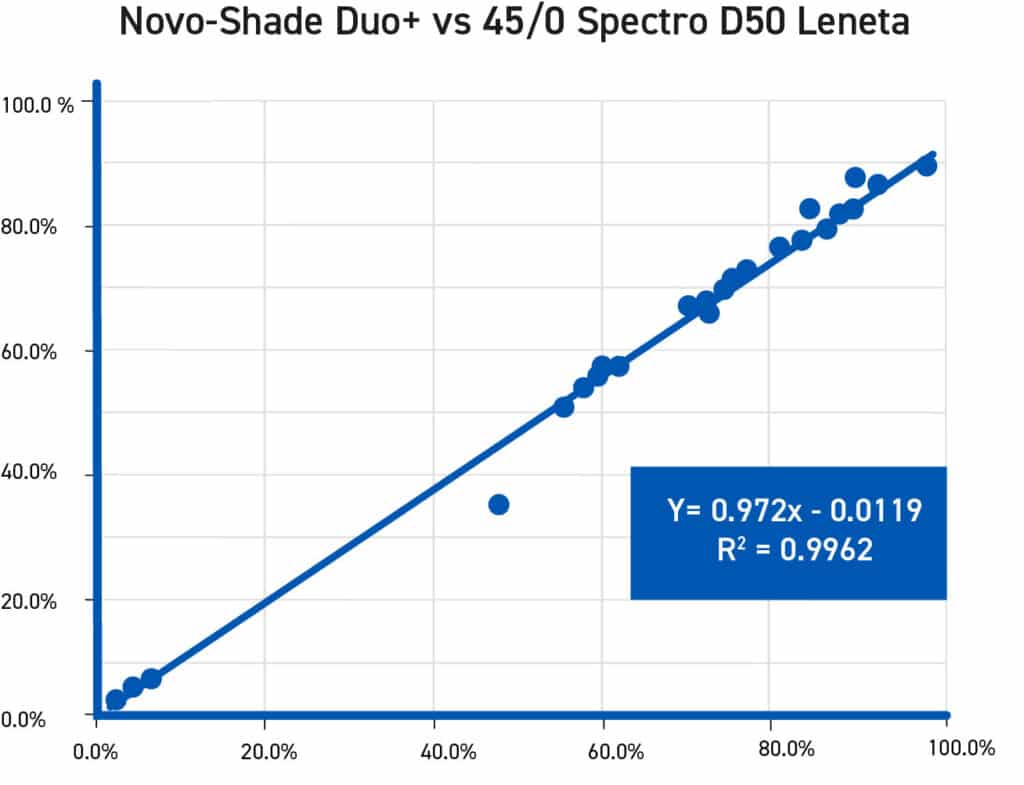
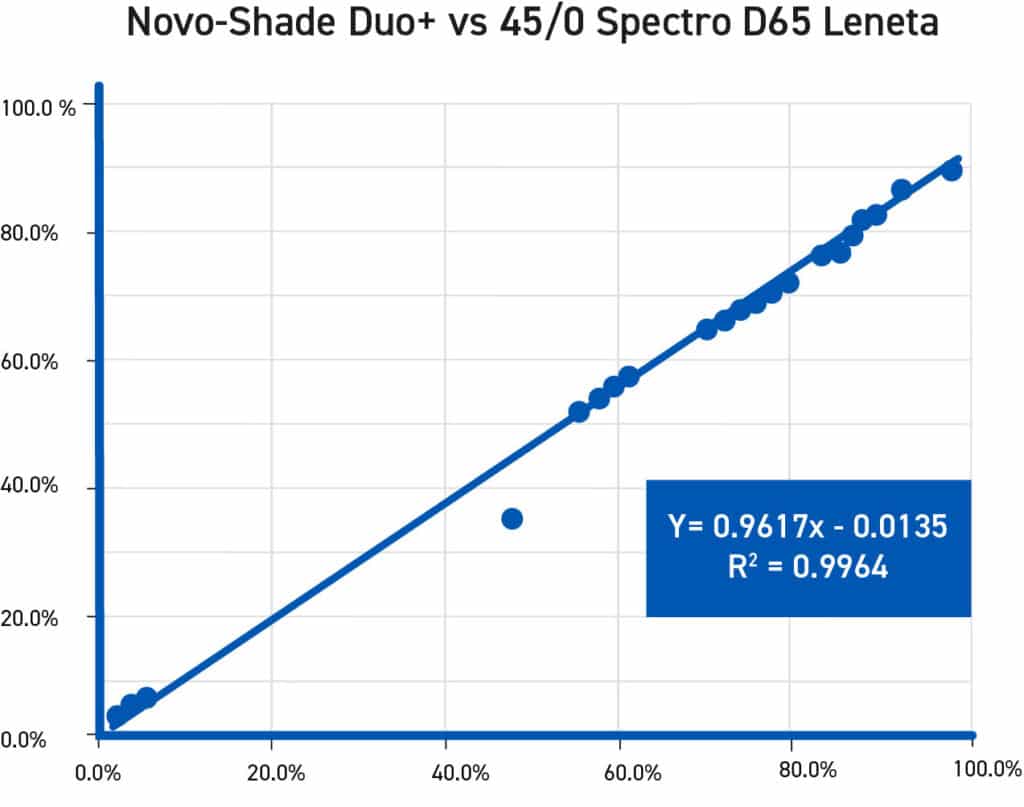
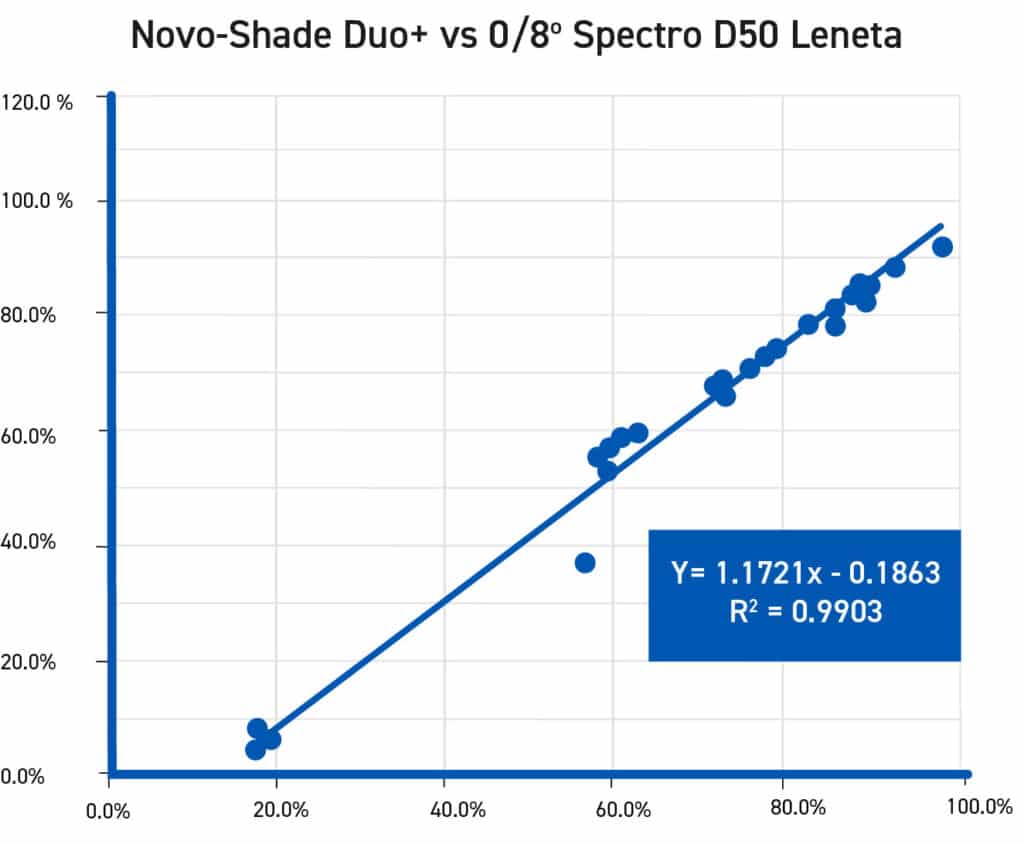
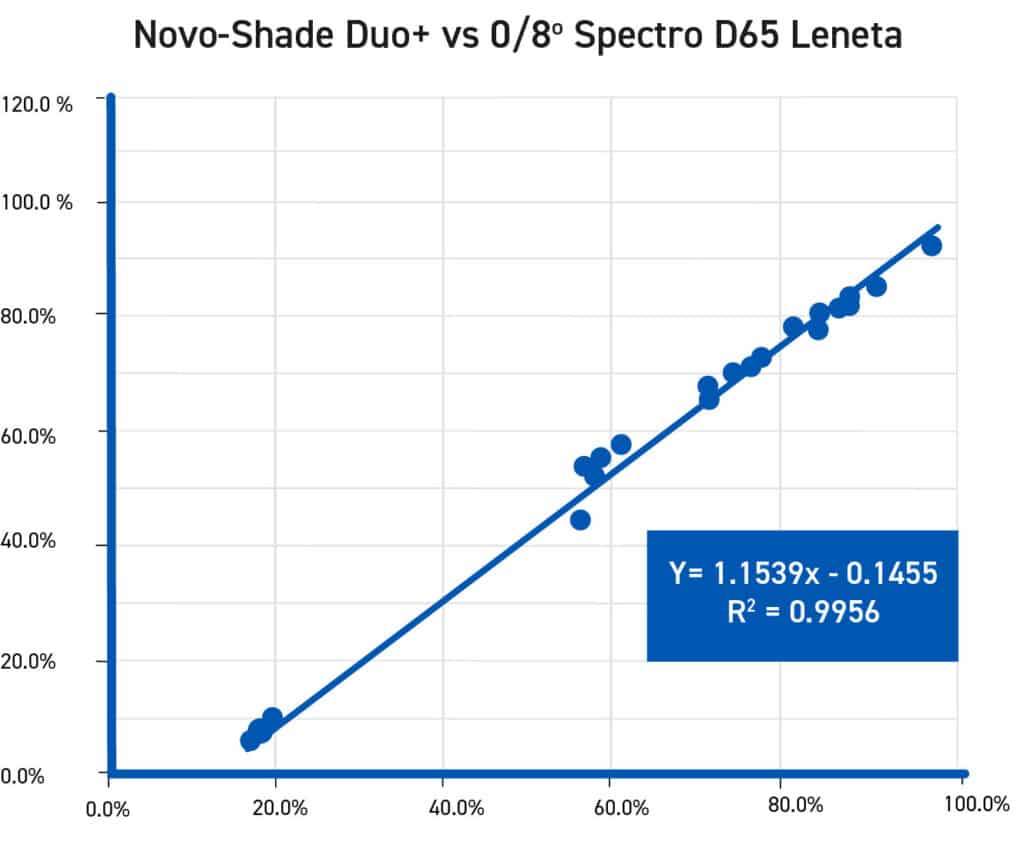
Measurements made on white tinted material over an opacity chart with specified spectrophotometers brands using 45/0 geometry and D8° geometry and compared with results made with a Rhopoint Novo-Shade Duo+.
Rhopoint recommends the Novo-Shade Duo+ 45/0 Reflectometer as an alternative to a spectrophotometer.
Results between Novo-Shade Duo+ and a spectrophotometer using 45/0 geometry are highly correlated.
Results are indistinguishable between Novo-shade Duo+ and a spectrophotometer using D8° geometry for opaque samples >60% opacity. More transparent materials <10% opacity measure higher on D8 geometry compared with 45/0 (Novo-Shade Duo+ and spectrophotometers).